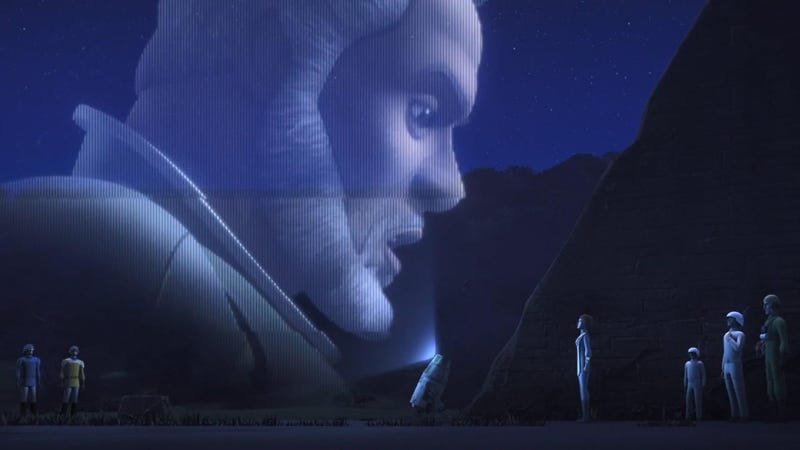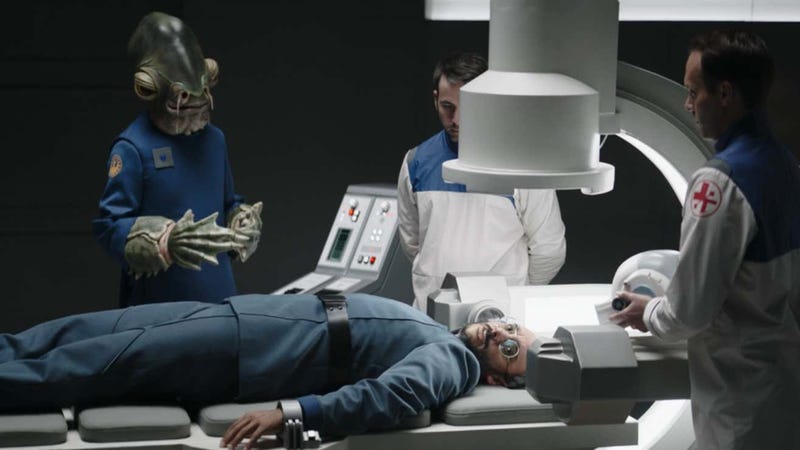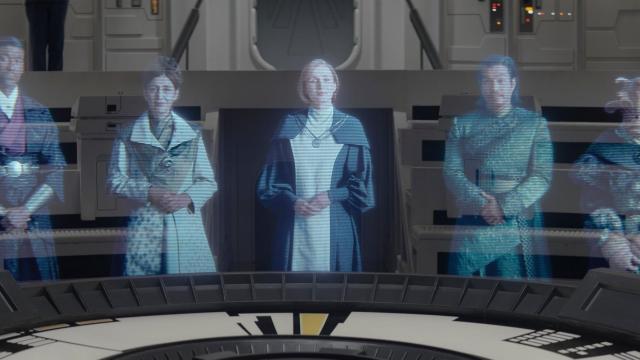In this week’s episode of Ahsoka, the New Republic brings to bear its frustrating head, as Mon Mothma and a cadre of senators bullishly cast aside the fact they’re sitting on a tinderbox of Imperial resurgence as the threat of Grand Admiral Thrawn offers a lit match. If only they could see, our heroes implore them as much as the audience does. How could they be so blind?
Because the New Republic, much like the Old Republic, is the culmination of generations of George Lucas’ political thoughts about what Star Wars is really about—especially in the prequel trilogy, as the rot from within the Senate as it readies its own fall to the Empire drew parallels to contemporary American politics. Decades later those same thoughts and critiques are clearer than ever in Star Wars’ cyclical storytelling, as we now find ourselves with a New Republic that, albeit nascent, is still as it ever was. And it’s just as potent a parallel to the centrist politic of our own world—beset by a resurgence of fascism it is woefully unequipped to contend with—in 2023 as it as in 2003. Because what is a liberal thought engine like the New Republic we are presented with here in Ahsoka, but the same bad politics with a better marketing campaign?
The rise and fall of the New Republic in both current continuity and its much longer decline in the fiction of the Expanded Star Wars Universe is a critique that is, perhaps, never quite so sharply intentioned as it can be perceived. After all, Star Wars is for better or worse a story of cyclical conflict. Light rises and dark to meet it, Empires fall and Republics rise, so that they too can fall and Empires can rise again. But that perception isn’t just culturally relevant in the political moment much of the Western world finds itself in; it’s baked into Star Wars’ political ideology from its earliest beginnings, all the way to the modern age where everything from Star Wars Rebels to Andor grapples with the political divide between sects of its heroes to varying degrees.

How bloodless can revolution be, and what parts of yourself have to be put on the table to face the threat of fascism? All these are fascinating thought explorations that we’ve seen come to the fore in series like Andor, are the ways, as Saw Gerrera goads Mon Mothma in Rebels, to fight unrelenting evil and win knowing that you “fought according to the rules.” But they are ideas that are out the window by the time of Ahsoka and The Mandalorian because we are returned to the political system of the Republic. And new or otherwise, the Republic—fronted by the same faces even, in figures like Mon Mothma—has always been presented in Star Wars as as veneer of democratic justice over a corrupt heart. One willing to cut deals with the worst elements of the galaxy because it’s in the name of the virtue of compromise, and one willing, as we are blindingly told in this week’s episode of Ahsoka, to keep the infrastructure and the people of the Imperial machine in place on a pinky promise. Because hell, say what you will about the Death Star, but at least Emperor Palpatine kept the trains running on time.
Ahsoka and The Mandalorian both gesture to a New Republic where the actual rebellious, politically radical elements of the Alliance that restored it have been ousted—either killed off burning their lives for the sunrise they’ll never see, or cast aside once the ugly reality of war was no longer necessary. In its place is the status quo that led to the Empire’s rise in the first place: the same kind of Senate, unwilling to see beyond that status quo, the same kind of programs the Rebellion fought against, because the systems are there and it’s easier to use them and put a nice name on it instead of actually doing the work of dismantling those systems—our heroes don’t flay minds, that would be evil! They just mitigate things, a little mild brainwashing, as a treat.

The message of the New Republic’s inevitable failure, and the frustration that engenders in Star Wars’ heroes and audiences alike, is as much about the franchise narrative’s circular rise and fall as it is a warning to us all: this is what you get when compromises are made with evil, instead of truly defeating it. You get to do it all over again, upend a world all over again, until you take that lesson to heart. Star Wars has shown us well enough what it looks like to ignore that lesson, at the very least.
Want more entertainment news? Check out when to expect the latest Marvel, Star Wars, and DC releases, what’s coming to cinemas in Australia this year, and everything streaming this month across all platforms. Check out our dedicated Entertainment tab for more.
